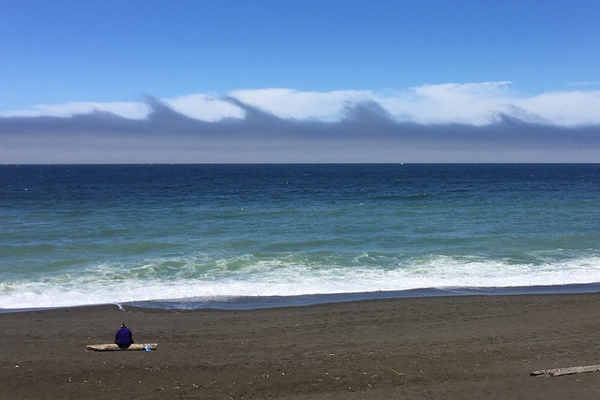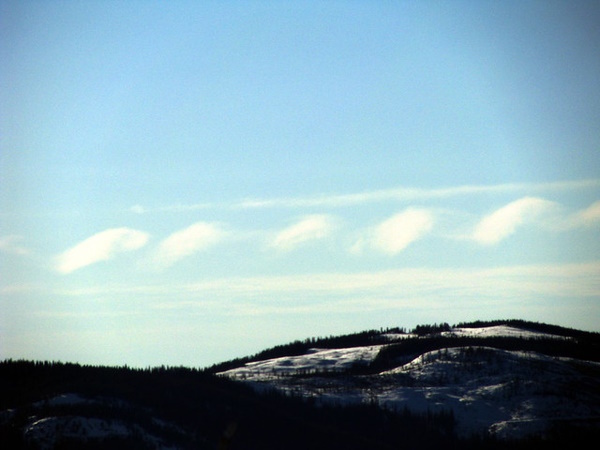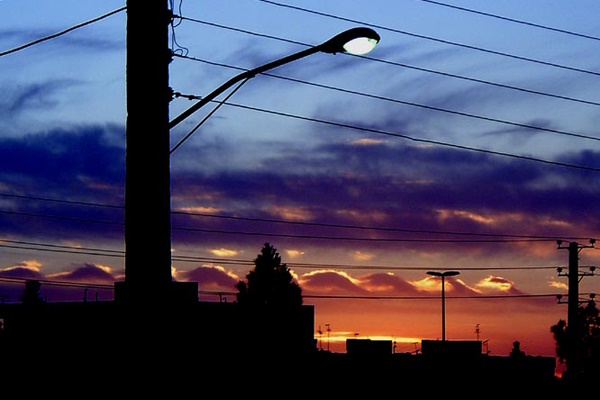Party Cloudy

Kelvin-Helmholtz Instability is expressed at the “sweet spot” that occurs before the turbulence gets too random. Indeed, it’s the eerie orderliness of the cloud waves and their decided lack of randomness that attracts our attention and, at the same time, raises our eyebrows.
If their strange appearance isn’t enough to set Kelvin-Helmholtz Clouds apart from their fluffy brethren, consider their impermanence: a perfect line of consecutive waves can form and break up within mere minutes. Perhaps this attribute explains, partially at least, why these clouds are as rarely described as they are actually seen. (image via Alyson Hurt)
Fog Gone

Kelvin-Helmholtz Clouds may be rare but they also can form under a wide range of weather conditions. For example, the Birmingham event took place in the early morning and involved a thick layer of opaque ground fog.
When Kelvin-Helmholtz Instability occurs in morning fog banks, it typically doesn’t last very long. The rising sun and the accompanying rise in temperature burns away the ephemeral Kelvin-Helmholtz Clouds, much like ordinary, non-wavelike morning fog. (image via Alan Grinberg)
Planet Waves

Most other instances of Kelvin-Helmholtz Instability expressed in clouds occur in much higher portions of the troposphere, often highlighted by a clear blue sky background. Isolated mountain peaks such as California’s Mount Shasta can also induce the formation of these unusual cloud formations.
Kelvin-Helmholtz Instability is a physical property and as such, is not exclusive to earthly weather. Astronomers have recorded the phenomenon in the sun’s wispy corona and along cloud bands racing around the gas giant planets Jupiter and Saturn, for example. It’s somewhat humbling to think that some of the larger crests of these interplanetary waves are large enough to curl around our comparatively small blue planet! (image via Drew Brayshaw)
Starry Night, Cloudy Night

You might wonder why the startlingly familiar shape of Kelvin-Helmholtz Clouds combined with their decidedly out-of-place setting hasn’t inspired folk tales, myths, legends and art.
Maybe they have: some say the “swirling clouds in violet haze” that highlight Vincent van Gogh’s exquisite painting The Starry Night were inspired by the Dutch artist once witnessing Kelvin-Helmholtz Clouds. Was van Gogh trying to express some deeper sentiment through his ethereal artwork? If so… “They would not listen, they did not know how. Perhaps they’ll listen now.” (image via Hamed Saber)
Think waves are a sign of something? Check out It’s A Tidalist: 10 Wet & Wild Tsunami Warning Signs!





